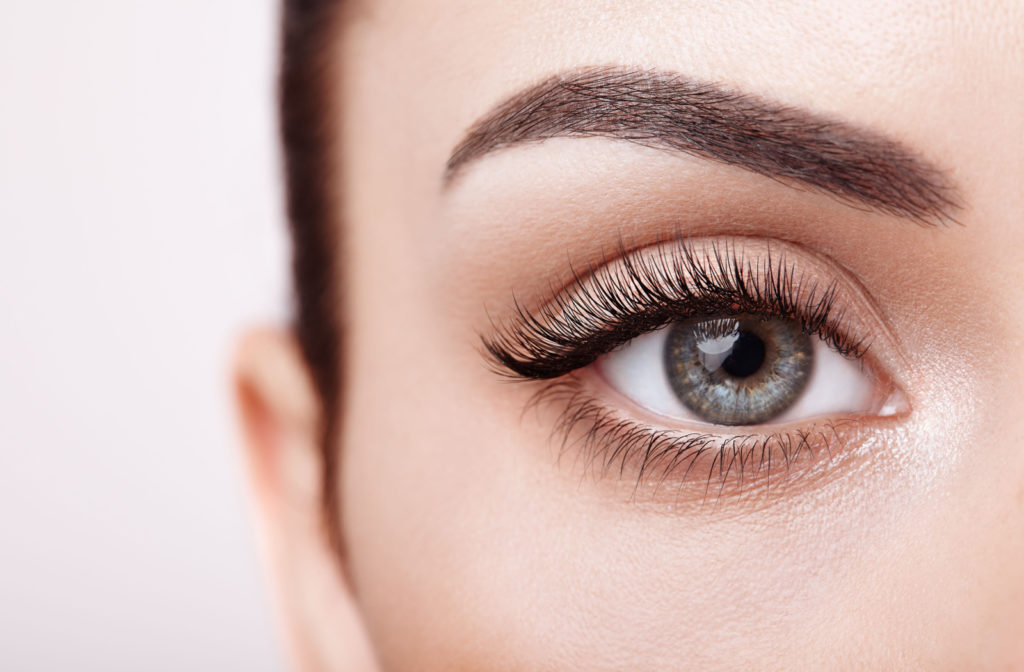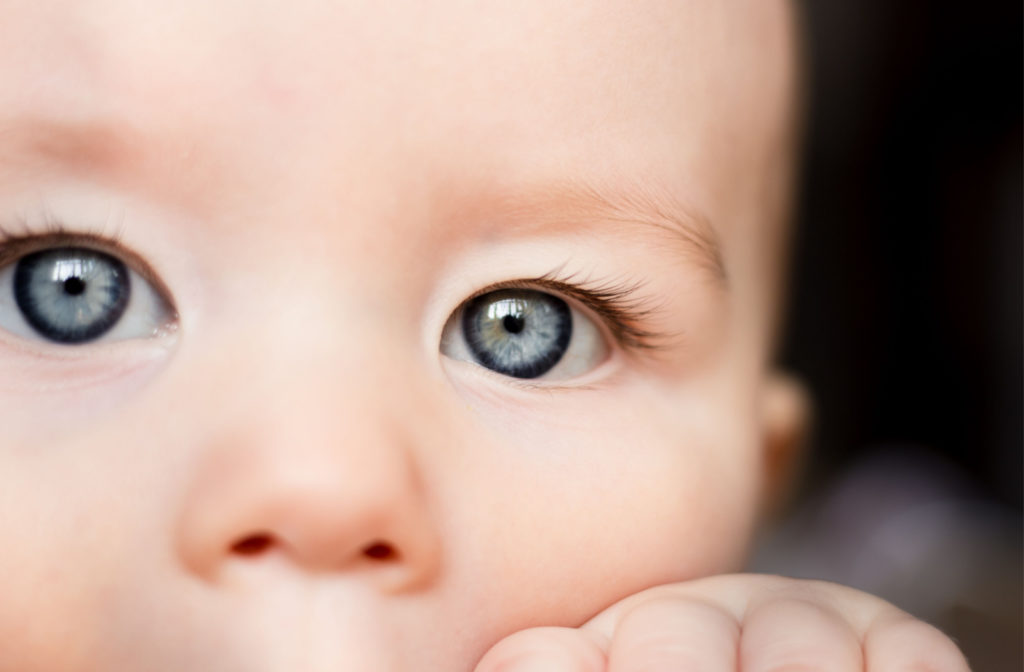Our eyes play an integral role in our daily lives; we rely on them to help navigate the world around us, connect with ourselves and others, and perceive important information.
Regular eye exams are one of the best things you can do to help protect your eyesight. Even before you notice symptoms, an optometrist can often identify diseases or changes in your prescription. Additionally, your eye doctor can assist you in finding relief from wearisome digital eye strain or irritable dry eyes.
When thinking about eye health, you may have wondered if your eyes grow over time. Yes, eyes do grow, and in this blog, we’ll take a look into the world of eye anatomy and development and address how eyes grow.
Understanding Eye Anatomy
Before we dive into the growth of the eyes, it’s helpful to understand the basic anatomy of the eye. The eye is a complex organ with several interconnected structures, including the cornea, iris, lens, retina, and optic nerve. The size and shape of these structures contribute to our ability to perceive light and images.
Cornea
The cornea is the clear part of the eye that covers the outside of the eye. It protects the pupil (the central opening of the eye), the iris (the coloured portion of the eye), and the anterior chamber (the fluid-filled interior of the eye). The cornea’s primary purpose is to bend or refract light. The cornea is in charge of focusing the majority of the light that enters the eye.
Iris
The iris is a flat yet muscular ring-shaped tissue located below the cornea of the eye, with an adjustable circular opening in the centre. This is the structure that gives a person their eye colour.
The iris is in charge of regulating the volume of light that enters the eye. Vision impairment occurs with too much or too little light; it is the job of the iris to narrow the pupil when there is too much light and to enlarge it when there is insufficient light. This is a brain-controlled autonomic function.
Lens
The lens resides inside the eye and alters the focusing distance of the eye by altering its shape. The lens focuses the light that travels through it to produce crisp images at varied distances. It also works with the cornea to bend or refract light.
Retina
The retina is a delicate covering of tissue that lines the back of the eye’s interior. It is close to the optic nerve. The retina’s function is to receive light that has been focused by the lens, transform it into neural impulses, and transfer these signals to the brain for visual recognition.
Optic Nerve
The rear of the eye contains the optic nerve. It is also called the second cranial nerve and is one of many cranial nerve pairs. The optic nerve manages electrical impulses that carry visual information from the retina to the brain’s vision centres.
Do Eyes Grow With Age?
Early Life
Eye growth begins early in life, even before birth. During fetal development, the eyes form small, delicate structures. As the fetus grows, so do the eyes, albeit at a slower rate compared to other organs. The size and shape of the eyes at birth are largely determined by genetic factors inherited from parents.
Childhood & Adolescence
The most significant period of eye growth occurs during childhood and adolescence. From birth to approximately the age of two, a child’s eyes undergo rapid growth, both in size and proportion. This growth continues gradually throughout childhood and adolescence, typically slowing down after puberty.
Adulthood & Beyond
While the eyes continue to grow and change during childhood and adolescence, growth slows significantly in adulthood, usually stopping around age 20. By this time, the size of your eyes has stabilized. However, this doesn’t mean that the eyes stop changing, as the weight of your eyes continues to increase throughout your lifetime.
Aging & Changes in Eye Structure
As we age, various changes occur in the eyes due to factors such as presbyopia (alterations in the elasticity of the lens), changes in the vitreous gel, and the development of age-related eye conditions. These changes can lead to visual acuity changes, colour perception and depth perception changes.
Myopia & Eye Growth
Myopia, or nearsightedness, is the most common refractive error, especially in children. While the cause of myopia is unknown, a theory is that the growth of the eye may play a role in refractive error development. Myopia occurs when the eyeball is overly elongated, causing light to focus in front of the retina rather than directly on it. While genetics play a role in myopia, environmental factors such as prolonged high-focus work, such as reading or screen time, can also influence its development during childhood and adolescence.

What to Know About Your Eye Health
Just like any other part of our body, our eyes require proper care and attention to ensure optimal health and function.
- Balanced Diet: Nutrient-rich foods like leafy greens, fish high in omega-3 fatty acids, and colourful fruits provide antioxidants that support eye health.
- UV Protection: Sunglasses that block harmful UV rays can reduce the risk of cataracts and other eye-related issues caused by prolonged sun exposure.
- Hygiene and Contact Lens Care: If you wear contact lenses, proper cleaning and hygiene practices are essential to prevent infections and discomfort.
- Adequate Sleep: Quality sleep is vital for overall health, including your eyes. Poor sleep can lead to dry eyes and eye strain.
Myths & Facts About Eyes
It’s no surprise that a subject as intriguing as our eyes has given rise to many myths and misconceptions over time. Let’s separate fact from fiction and uncover the truth about some common myths related to eyes.
Myth: Carrots Improve Your Vision
Fact: While carrots are indeed a healthy source of vitamin A, which is essential for good vision, they won’t miraculously grant you superhuman eyesight. A well-balanced diet rich in a variety of nutrients contributes to eye health. Vitamin A is crucial for maintaining good vision, but it won’t give you night vision like some myths suggest.
Myth: Wearing Glasses or Contacts Makes Your Eyes Weaker
Fact: Wearing corrective eyewear like glasses or contact lenses doesn’t weaken your eyes. In fact, it helps you see more clearly and comfortably. Refractive errors are caused by the shape of the eye, and glasses or contacts simply compensate for these imperfections.
Myth: Using a Computer Will Ruin Your Eyesight
Fact: Prolonged computer use can lead to eye strain and discomfort, a condition known as computer vision syndrome. However, it won’t cause permanent damage to your eyes. Following the 20-20-20 rule (looking at something 20 feet away for 20 seconds every 20 minutes) and ensuring proper lighting and screen ergonomics can help alleviate eye strain.
Myth: You Only Need an Eye Exam When You Notice Problems
Fact: Regular eye exams are essential for maintaining good eye health, even if you’re not experiencing noticeable issues. Many eye conditions, such as glaucoma and early stages of macular degeneration, can develop without obvious symptoms. Early detection and treatment are crucial to preventing long-term damage to your vision.
Eye Care at Home
The health of your eyes goes beyond routine check-ups; it involves adopting simple yet impactful practices within your daily routine. Here’s a concise overview of effective eye care at home:
- Wash hands before touching your eyes
- Remove eye makeup before bed
- Follow proper contact lens cleaning routines
- Consume leafy greens, colourful fruits, and omega-3 rich foods for eye-friendly nutrients
- Follow the 20-20-20 rule during screen time
- Establish a calming bedtime routine for quality sleep
- Maintain a comfortable sleep environment
Incorporating these habits into your daily life complements professional care, helping your eyes to remain healthy, vibrant, and well-cared for.
Understanding Your Eyes
Understanding the science behind eye development can help us appreciate the complexity of this vital sensory organ and the role it plays in our perception of the world. Reach out to the team at Southwood Eyecare and book an exam to learn more about your eyes and how to help keep them healthy.




